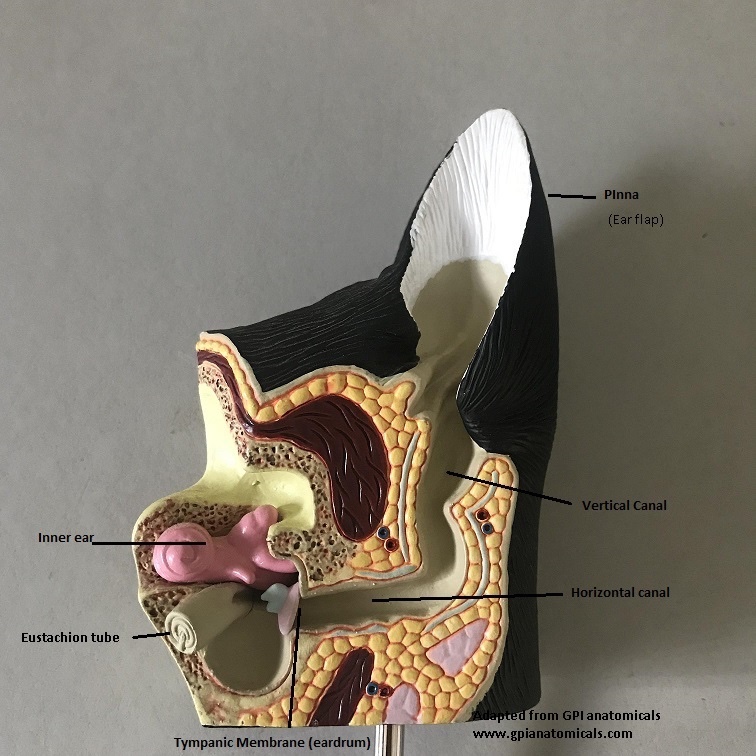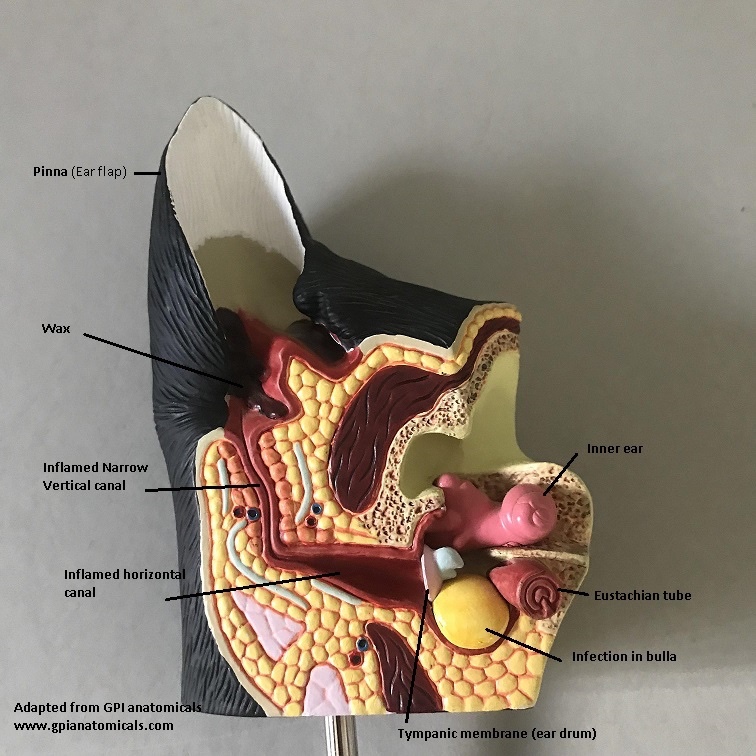Ear infections also called ‘otitis’ are a common and chronic problem we see in our K9 and feline friends. It can be a painful and distressing ordeal for both pets and their humans.
An ear infection generally begins with an irritant, these cause the delicate lining of the ear canal to become inflamed leading to excess wax production which in turn allows bacteria and yeast to multiply. Unfortunately it doesn’t take a great deal for the natural cleaning process of the ear canal to become disrupted. Infections typically start in the outer ear canal (otitis externa) and can progress to the middle (otitis media) then inner ear canal (otitis interna).
To properly diagnose and treat the cause of an ear infection veterinary intervention is needed.
What causes ear issues in our dogs and cats?
*Structure of the ear canal and breed disposition- some breeds have narrow (stenotic) ear canals, large floppy ears, or hairy ear canals leading to poor ventilation.
*Allergies- environmental factors such as grasses, pollens or food allergies can cause the ear canal to become irritated- this is the leading cause of otitis.
*Bathing or swimming – Can cause water to enter the ear creating a moist environment perfect for bacteria and yeast growth.
*Foreign body- an object lodged in the ear canal such as a grass seed or dirt.
*Humidity- a warm moist environment is perfect for an infection to flourish, in particular in an ear with poor ventilation.
*Ear mites- can certainly cause an ear infection.
*Growth in the ear canal.
*Underlying medical issues, although less likely.
*Bacteria and yeast- this is usually secondary to the main causes of ear irritation mentioned above.
Signs of ear infection:
*Shaking of the head
*Scratching at the ear or rubbing ear against the floor/wall
*Smelly odour and discharge
*Redness and swelling
*Broken skin in and around the ear
*Painful ear
*Head tilt
*Aural haematoma – a swollen blood filled lump on the ear flap, this can be secondary to an ear infection caused by shaking of the head.
Diagnoses and treatment:
Your vet will examine your pets ear canals with an Otoscope (special light designed to look down ears) and take a sample of the debris in the ear. They will apply a special stain to the sample and look under the microscope to see if the infection is caused by bacteria or yeast. Sometimes this may need to be done under sedation due to pain. They will check if any foreign body, growths or ear mites are present. A sample may also need to be sent away to a laboratory for further testing.
The outcome of the exam will determine the treatment plan, typically it involves cleaning the ears to dislodge and remove any debris then application of an ear medication specific to the type of ear infection present.
Further treatment may involve oral medication, anti inflammatories and anti histamine. This will need to continue for a number of days along with a follow up exam by the vet. If underlying disease is suspected a blood test may be recommended. Allergy testing and food trials may be also recommended in pets that have chronic ear and skin issues.
If left untreated infection can lead to rupture of the ear drum, chronic or recurrent infection can lead to thickening of the tissues of the ear canal, and narrowing of the canal which can make them more difficult to clean and treat and disrupts the natural function of the ear- surgery may be necessary for chronic sufferers.
For further information please contact us on 4362 1644.



